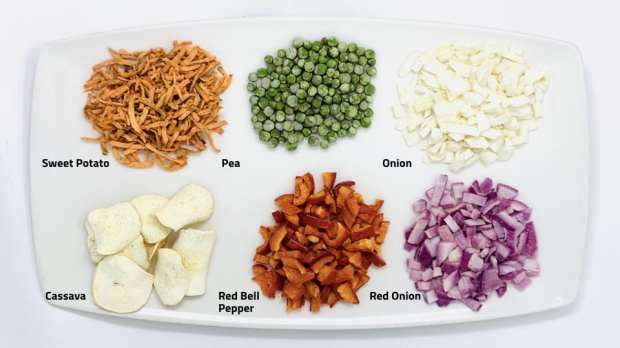Can Refined Food Waste Give A Boost To Sustainable Commerce?

Sustainable commerce is having a moment — well, two or three of them given how millennials and even younger consumers champion the trend — and that applies to food waste and commerce involving meat and plants. And in a new interview, PYMNTS got a glimpse of where things are headed, and how payments and commerce technology could help further drive the trend, and even spark direct-to-consumer (DTC) sales.
Right after the New Year’s festivities, PYMNTS caught up with Treasure8 Co-CEO and Founder Timothy Childs to talk about his vision, through that fledgling company, to make agricultural food waste into products that can enter the wider supply chain instead of essentially being wasted for less profit. The general ideal, according to the company, “is a pipeline to capture and convert a fraction of the 1.3 billion metric tons of global food waste from [consumer packaged goods] CPG companies, agriculture and grocery into cost-reduced ingredients and products to be sold by ourselves and others. Scalability and speed are critical for us to create the systemic, global impact we desire.”
As Childs explained it, when it comes to raw agricultural output meant for consumer consumption — as opposed to livestock — some 30 percent to 40 percent of that output “doesn’t make it to a person’s house.” It’s not just corn and soybeans and such, but pressings from wine grapes, for instance. What Childs is trying to do is find ways to refine those various waste products and sell it — say, for pet food, beer making or other uses. Not only does that reflect the general trend toward sustainable consumerism, in his view, but with the right technology, it can help mitigate the pollution that causes human-made climate change.
Need for Transparency
That technology can be a bit complicated, and PYMNTS is not a science or engineering journal. But the general effort is something that Childs likes to call “drying as a service,” which speaks to the way that such waste must generally be dried before being shipped to a new market, wholesalers or other players in the supply chain. Treasure8 focuses on the drying-as-a-service part, not the transportation (for instance, it doesn’t own a fleet of trucks to take such refined waste from farms to other markets). The company makes its money via a per-pound fee for its drying services, he said.
One of the main tricks to do this well is making sure the whole process is transparent — another central idea of sustainable commerce in general. For now, that means using, at least generally, paper-based and some digital processes to know what is flowing through the supply chain enabled by Treasaure8. In the future, Childs said, he hoped to employ blockchain, which promises to play a larger role over time in other areas of payments and supply chain management.
Another big challenge is scale. But as Childs explained it, once a certain drying-as-a-service technology proves itself in one area of refined food waste, it can work in that sector all around the globe (though each country might have differing regulations, of course). For now, Treasure8 is mainly a B2B operation — as one can imagine, given the products involved, and the supply chain — but direct-to-consumer options could be a bigger part of the company’s play going forward, which reflects larger trends, he said, in how brands are communicating to customers. One potential example of that? “Bruised fruits could become apple chips,” he said. The company also intends to seek out more corporate partners in the near term.
Larger Trends and Investments
Beyond Treasure8, food waste is a growing concern for consumers and retailers and other companies seeking to gain an edge on the growing sustainable commerce trend — and find new sources of revenue and profit, as PYMNTS has covered.
Each year, roughly 1.3 billion tons of produce is wasted, globally — discarded into landfills unconsumed. This wastes not just the fruit or vegetable in question but also all the time, land, money and water that went into growing it. How that food ends up in the landfill varies — farmers who leave crops in the field because it is cheaper to let them rot than harvest them in a down market; consumers whose eyes are literally bigger than their stomachs and throw out more fruits and vegetables than they consume; and products damaged in transport from farm to store and left unfit for sale.
Moreover, there’s the ugly produce — perfectly healthy food that tastes perfectly fine but is unfit for the beauty contest that is the grocery produce aisle. Gnarled carrots, misshapen cucumbers, twisted celery, lumpy onions, to name a few, are among the produce that farmers can’t sell because consumers won’t buy them.
Treasure8 has its path to owning at least part of this growing area of commerce. “We have this end-to-end solution approach,” Childs said. The next step is gaining more capital as the technology proves itself. “We hope in the next two years to engage with sovereign wealth funds,” he said. “The biggest bottlenecks now are with capital.”
